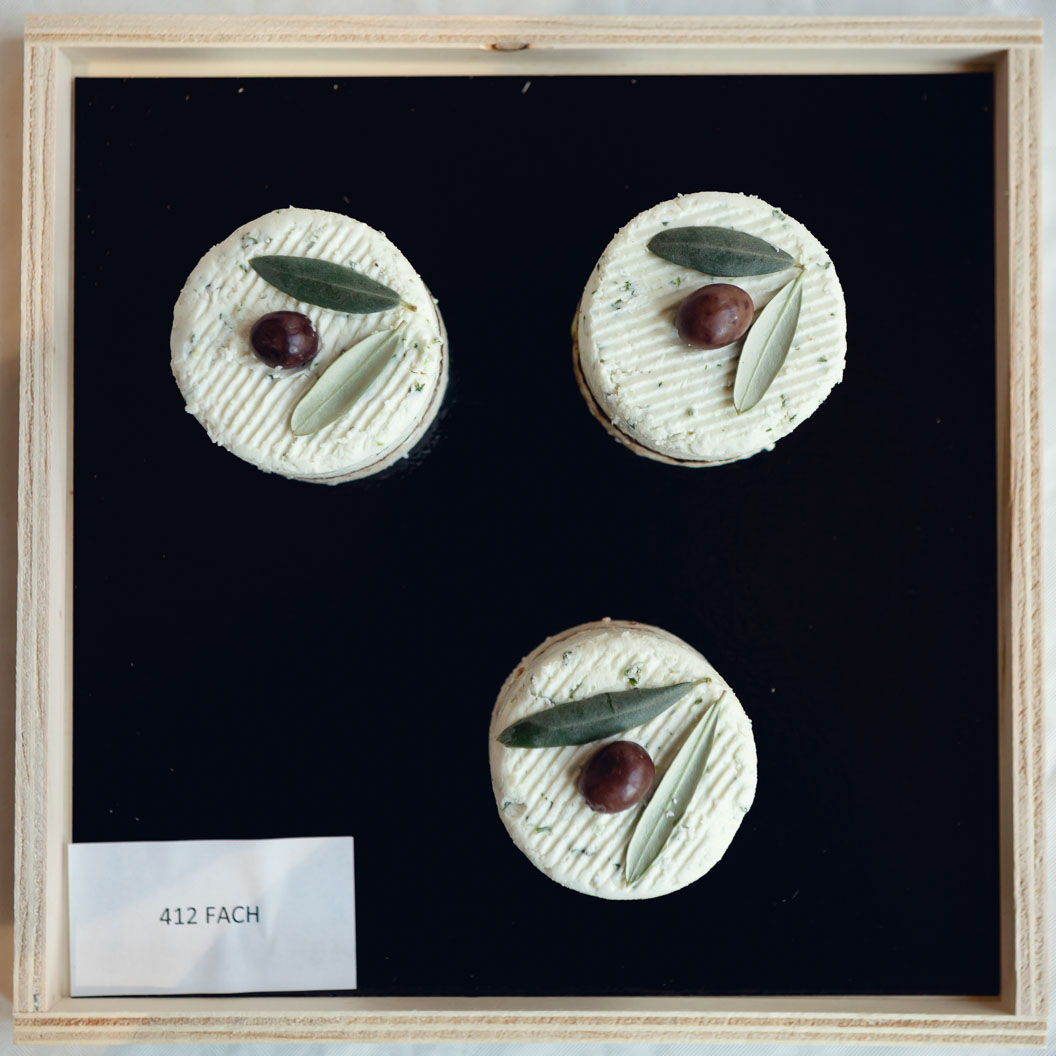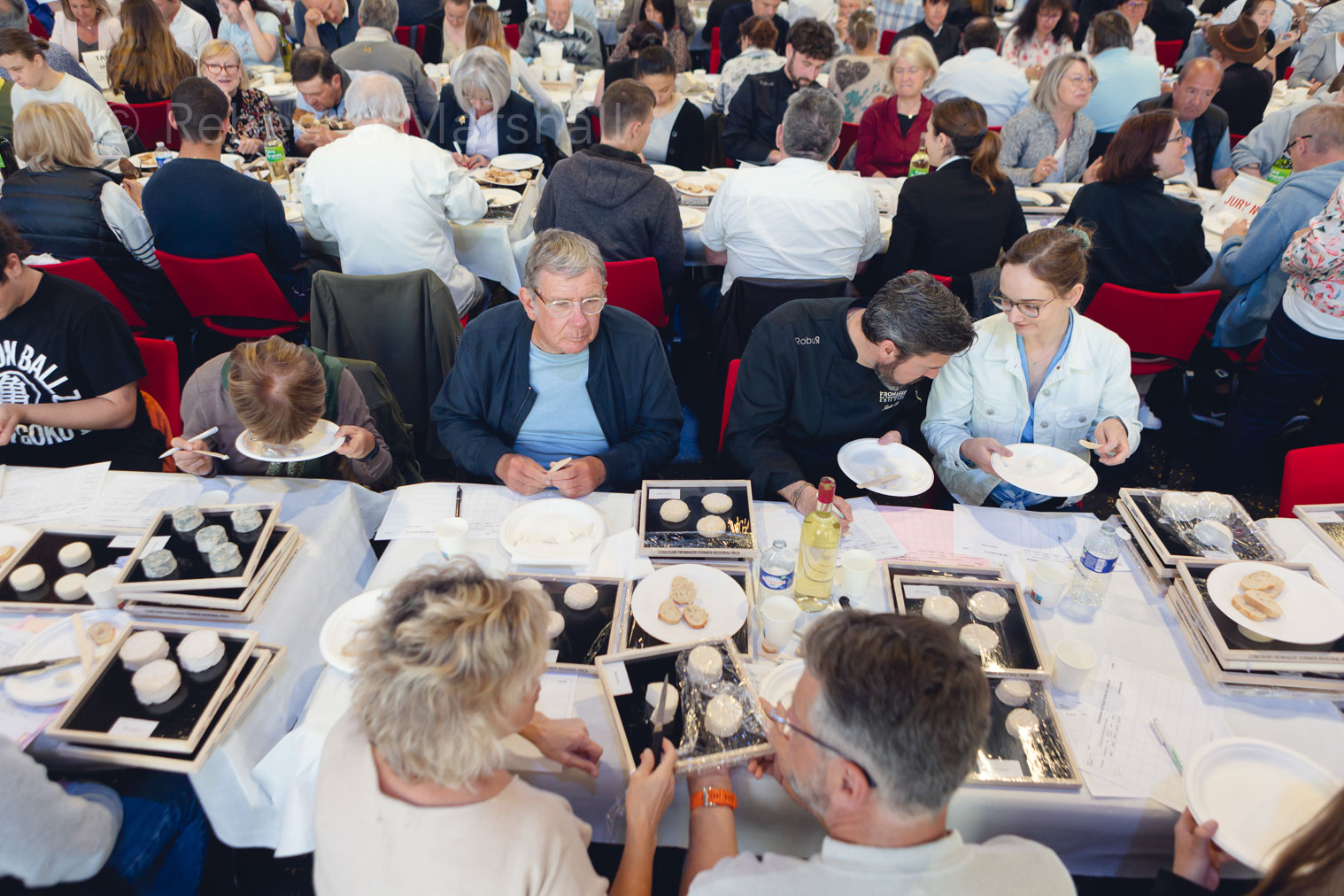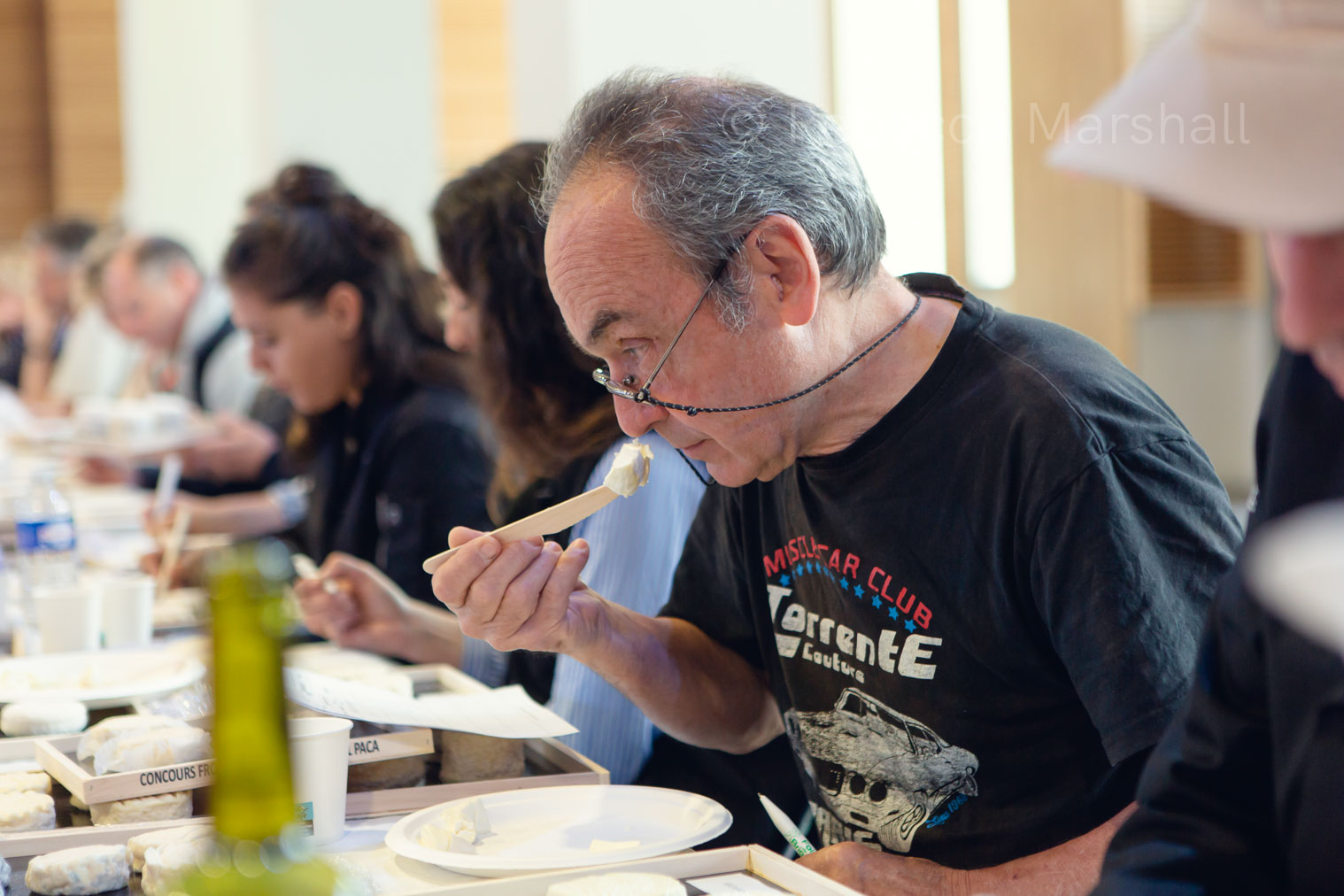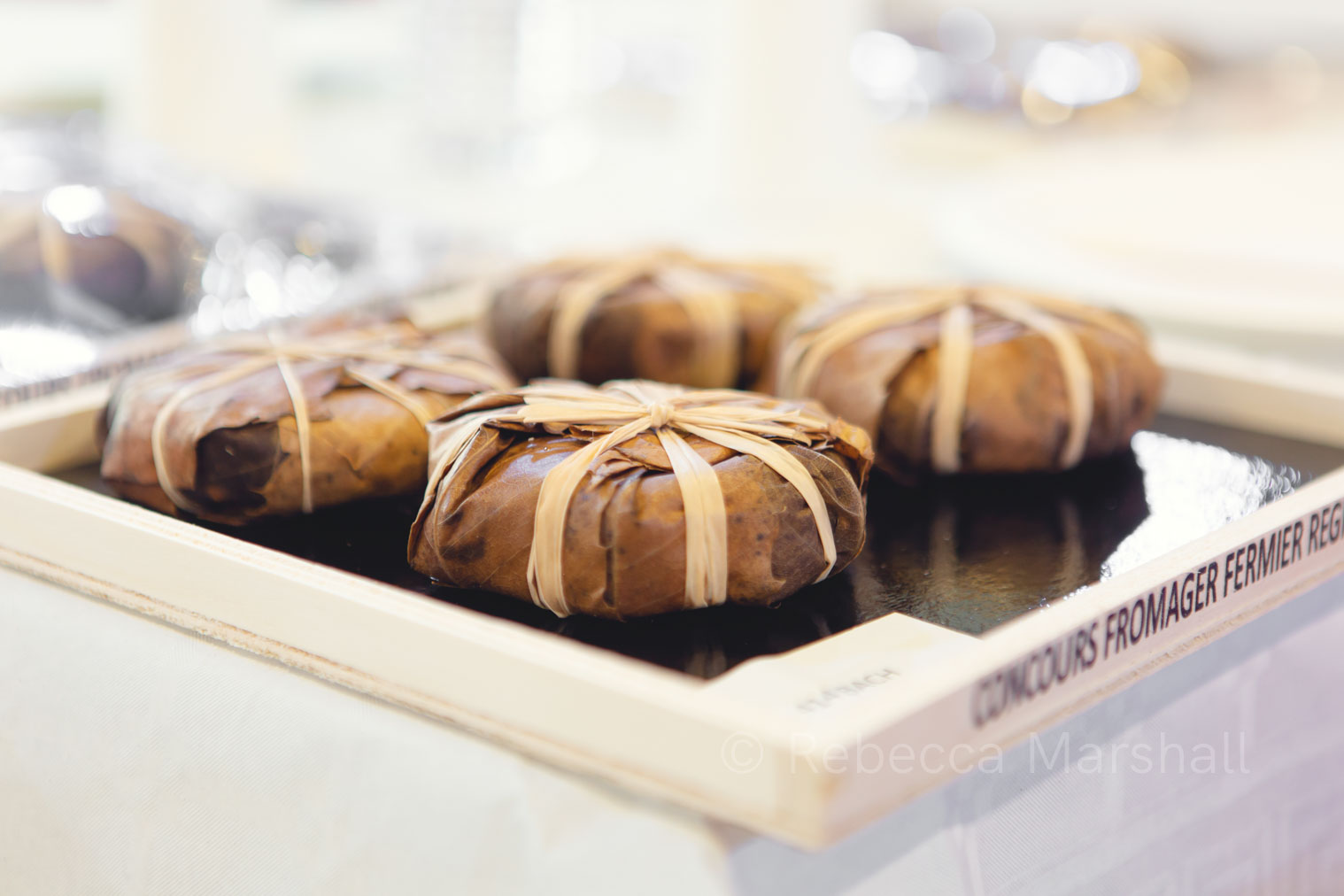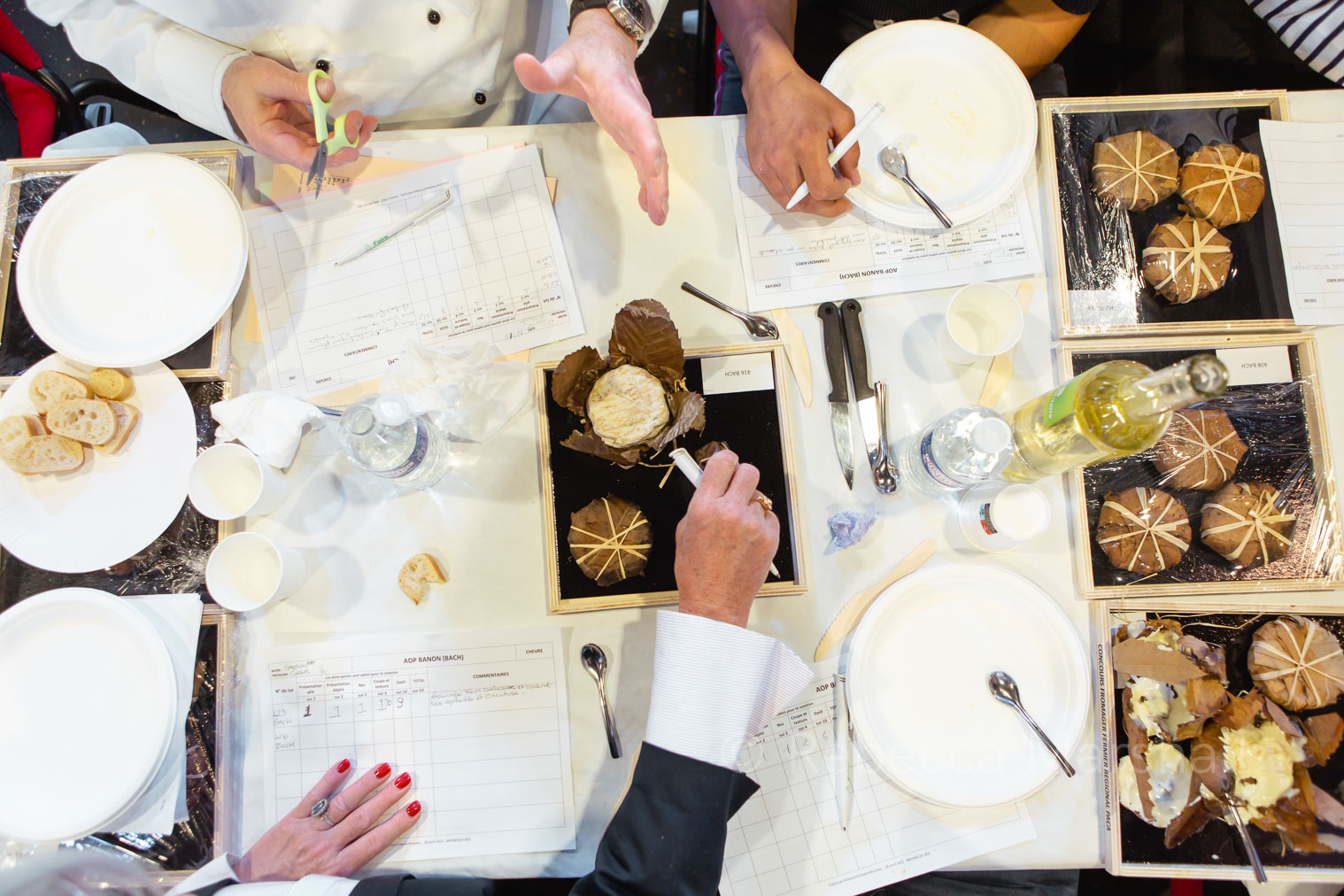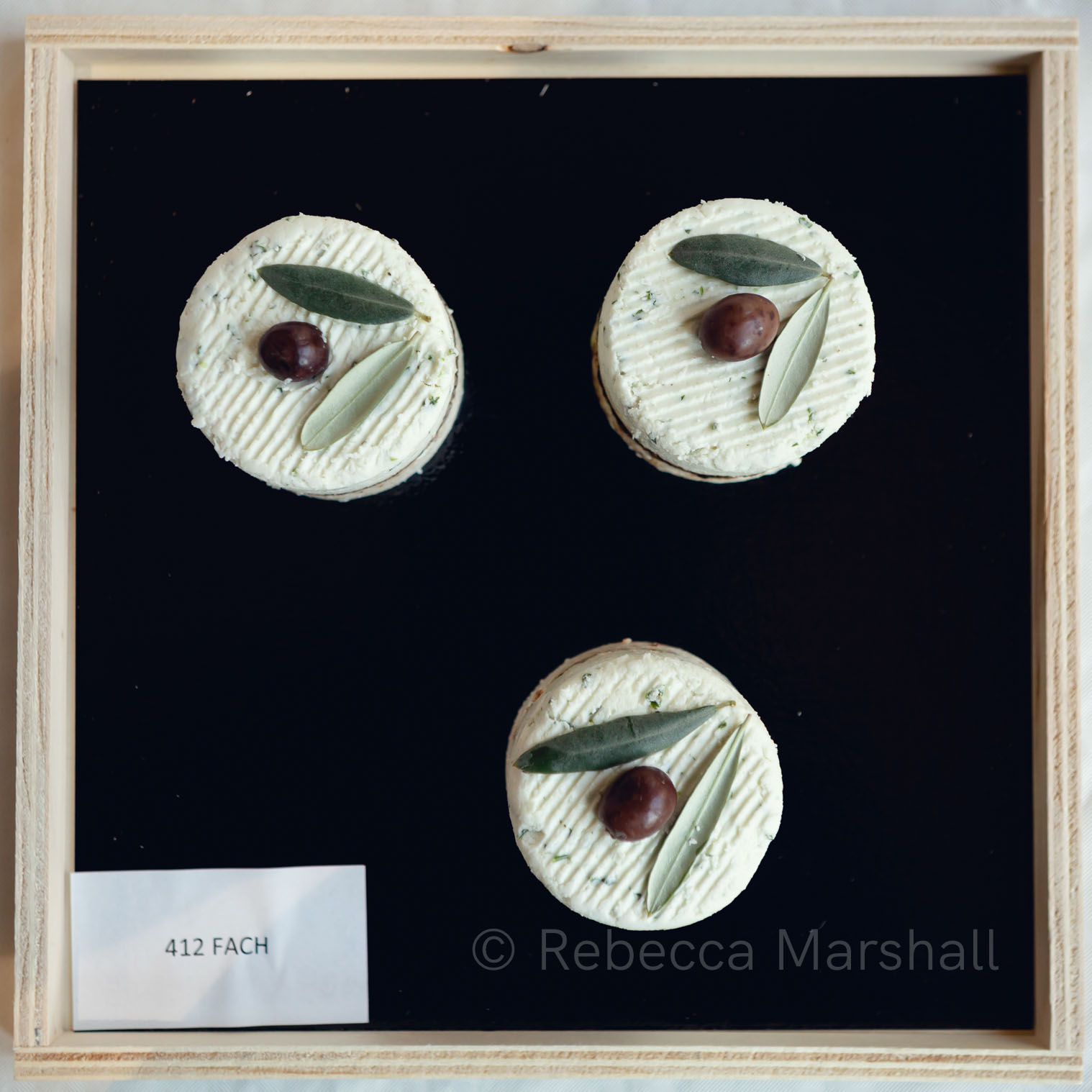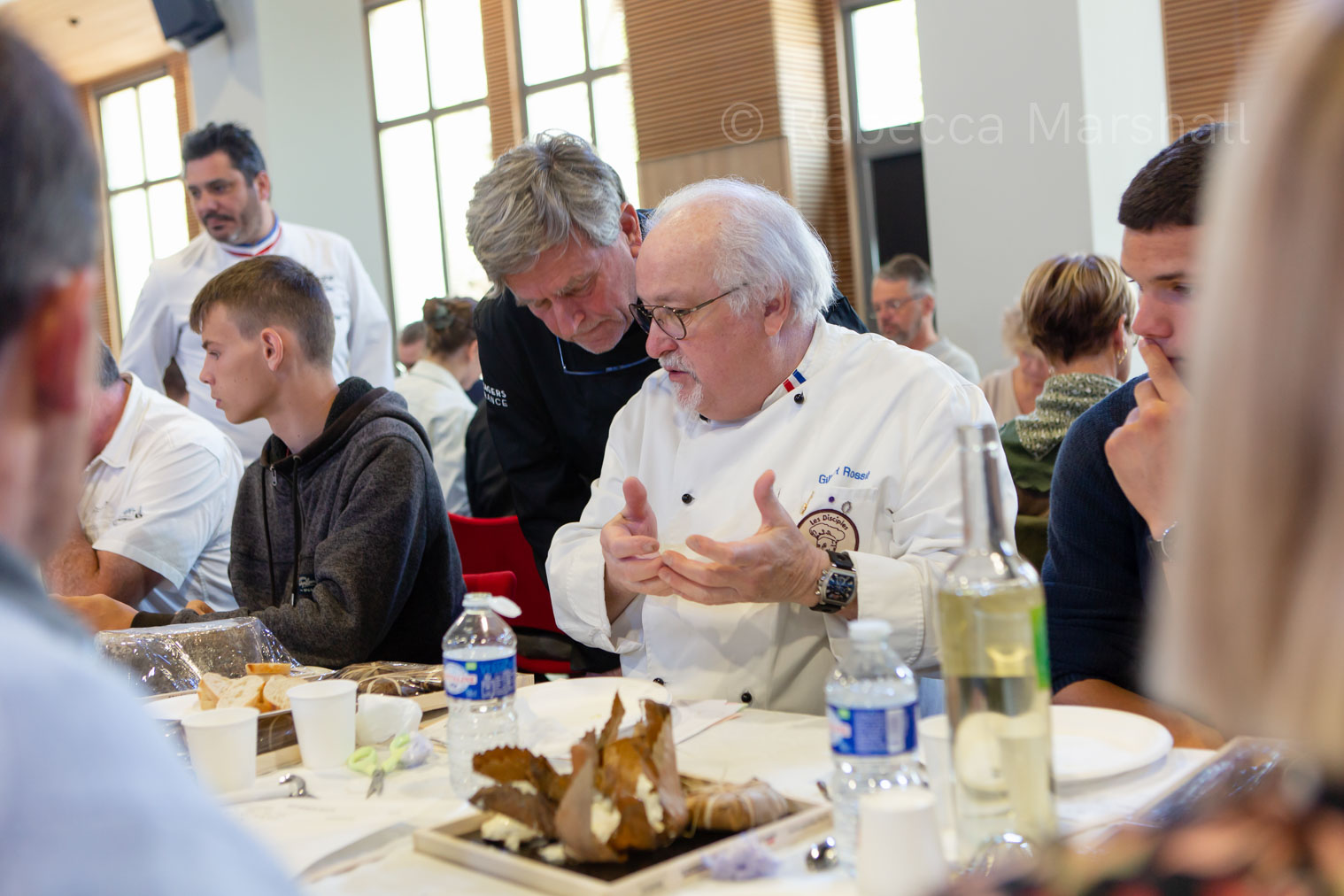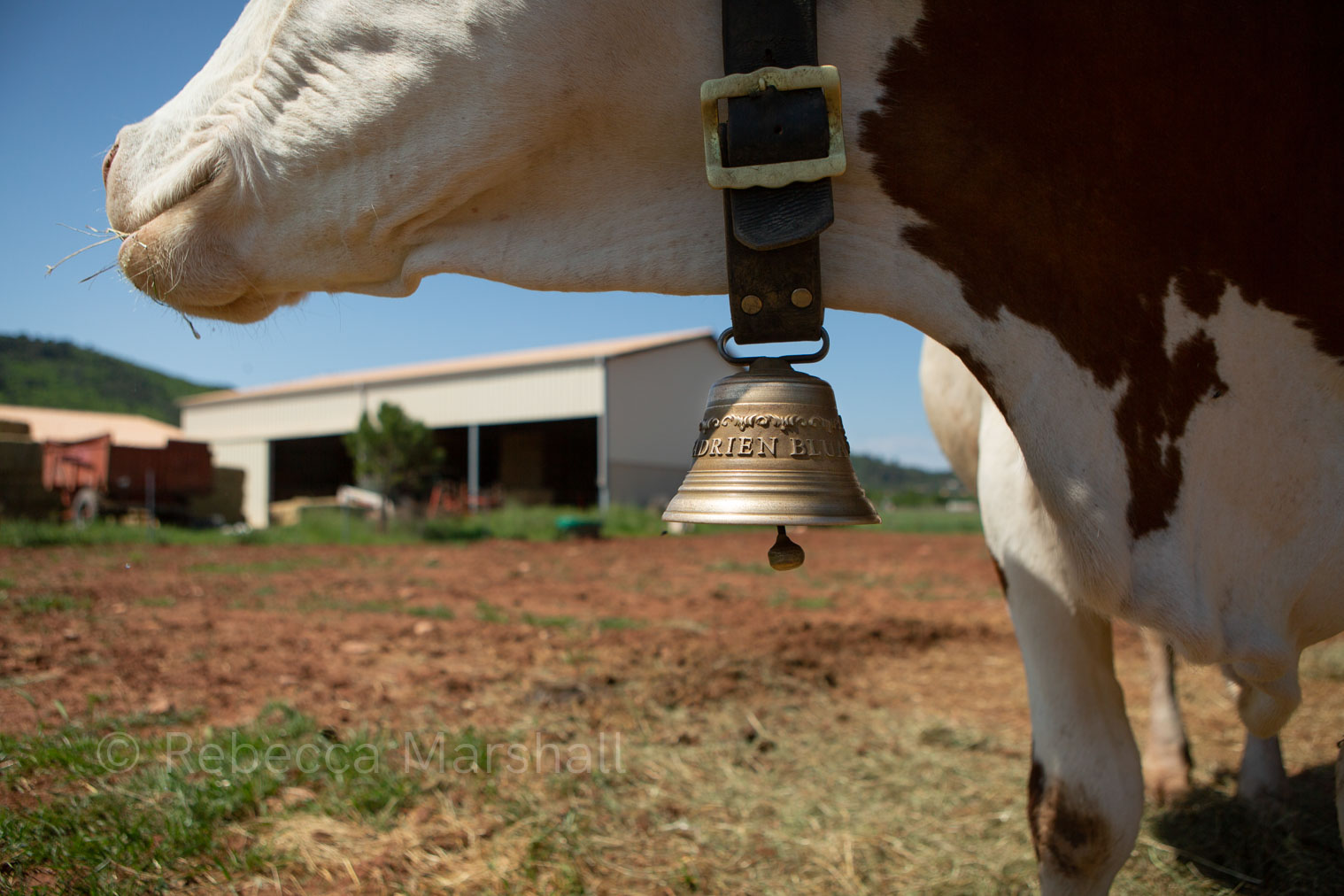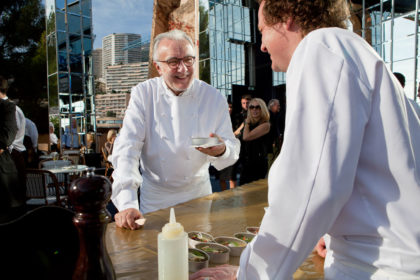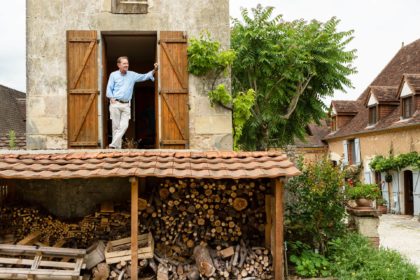The applause died down; a hush fell on the room. The president of the Provence cheesemaking society had just finished his introduction and 250 jurists now drew their attention to the cling film-wrapped plates before them. At table 24, I took a deep breath. I’d had the great honour of being invited to be a jurist at this biennial Provence cheese contest, a prestigious event in the South of France gastronomic calendar and, being neither French, nor a cheese expert, I felt a little nervous.
Nation of 246 cheeses
Cheese is a big deal in France. Charles de Gaulle once said “How can anyone govern a nation that has two hundred and forty-six different kinds of cheese?” Before today’s France was even drawn on the map, each region made its own distinctive cheese. The form and taste depended on the local livestock, vegetation, climate and techniques of production, and these cheeses were an important aspect of each region’s identity. As time went on, the growth of big producers and distributors reduced dependence on neighbourhood producers and now supermarkets offer cheeses from across the country in the same fridge. Yet the French retain a certain attachment to local food traditions and many consumers today seek out small producers of quality fromage du pays (regional cheese) – which is where this contest comes in.
No award acceptance speeches
430 samples of cheeses and yoghurt had been delivered by farmers to 15 collection points across Provence, en route to the exhibition hall in Brignoles. In the quest to pick out the best cheeses, anonymity of entries is taken very seriously and each sample had been number-coded by members of the regional federation of fromagers. Fromagers is a difficult word to translate: while it may refer to farmers who make their own cheese, it can also mean cheese sellers – who, as Thomas Metin, my fromager friend, explained on our journey there, run this contest.
There would be no gala prize ceremony or any tearful acceptance speeches – just a room full of jurists (cheese sellers, chefs and food critics) assessing cheese samples all morning, after which the scores and comments would be put into a database. Medals would be assigned after everyone had gone home, and certificates sent out in the post. There wasn’t much point in the cheese-makers attending. “You want to know who the winners are? Check the paper tomorrow morning”.
Provence: land of goats
Provence landscapes are varied, rising quickly from the flat, built-up coast to the high Alps, and much of the cultivated land is steep. Lacking in space for large-scale agriculture, most of the region’s cheese producers are individual farmers – this Provence cheese contest is the only one in France where industrial cheese brands are not allowed to participate. Goats generally deal with the South of France rough terrain, summer heat and arid vegetation better than cows or sheep, and the majority of traditional Provencal cheeses are made from goats’ milk. One goat produces only 2 litres a day (a cow milks up to 25 litres) and, as they explore and climb, goats feed on scrub and lick salt and minerals from rocks to make for some pretty intense, pungent cheeses.
Digestive dangers of being a jurist
Thomas had pointed out beforehand that cheese-tasting isn’t like wine tasting. There is a lot to taste, but, unlike wine, you don’t spit any out. He warned that this can wreak havoc, even to a seasoned fromager’s digestive system. “It’s especially bad news if you’re on the brousse [a soft, whey cheese] or yoghurt tables; you’ll have diarrhoea for a week afterwards.” Each of the 43 tables was loaded with around 10 platters of a single kind of cheese, and my heart sank when I saw that I had indeed been assigned to the tasting of brousse.
Each jurist had their own scorecard and the table chief collated the results from all 5 jurists for a final, average score. A cheese scoring over 16 would win gold, 14-16 silver, and so on. Bottles of the right kind of wine for each table’s cheese were brought (to neutralise taste between cheeses, rather than for enjoyment – wine is the best thing to cleanse a cheese-taster’s palette), as well as a little bread, but both were consumed in extreme moderation. This was clearly a very serious business.
The language of cheese
Points were given for: 1. appearance 2. smell 3. texture and 4. taste, and the weighting of each score depended on the type of cheese. For brousse, for example, texture was scored out of 6 and taste out of 10 – yet texture of hard cheeses is judged out of 3 and taste out of 12. The most challenging line in the scorecard for me was the comments. Cheese-tasting is not a profession, yet it has its own vocabulary, one that tested both my French and my knowledge of cheese. Gui Gedda, a fellow jurist on my table, is a famed chef and culinary author who, now 80 yrs old, is sometimes referred to as the ‘Pope of Provençal cuisine‘. Yet even he confessed that he’d never dared to write about cheese: “It requires an expertise of its own”. Translation tools weren’t going to help me with terms such as “long en bouche” [long in the mouth], “belle tenue” [nice outfit], “nez fin” [thin nose] or “trop resseré“ [too tight]. I wasn’t sure how a ”belle odeur de cave” [nice cellar smell]” could be an asset either.
Ones to watch
According to Vincent Vergne, one of the Meilleur Ouvrier de France present [MOF is a prestigious national title awarded to outstanding individuals in certain trades – including fromager], Provence boasts an extraordinarily diverse range of cheeses.
“Some think that Provence is cheese-poor compared to other parts of France, but they’re quite wrong. Look at all this!” he exclaimed, sweeping the room with a big French arm gesture. The classics were all there, cow, goat and sheep cheese; hard, soft, big, small. Vincent also pointed out the new cheeses, the ‘ones to watch’. Two cheeses were both in the process of applying for an AOP [Appellation d’Origine Protégée is a rigorously-inspected label for food products that guarantees quality and origin]: the blue, mountain cheese ‘Bleu de Queyras’ and the soft Tomme de Champsaure”. Goat’s milk ice cream was a new category this year too, and the aromatic goat’s cheeses are apparently constantly re-invented. Topped with olives, or South of France herbs such as thyme or savoury, they are the most refreshing cheeses to eat in hot weather, Vincent advised.
Breaking point
As photographer, I had a reprieve from tasting every sample as I took pauses to document the action. However, over on the Banon table (Banon is a goat’s cheese, matured and wrapped in chestnut leaves), chief jurist Gilbert Rossit had reached breaking point. “I can’t take it any more!!” After 3 hours, the retired chef of some of the most prestigious restaurants of the French Riviera was one of the last tasters at work. “We had 11 trays, each one with 3 cheeses…and even each of the 3 cheeses from the same producer were different!”, wailed his despairing wife and fellow jurist, Annie.
Banon was the only AOP cheese in the competition and Rossit has been a member of the AOP Banon Inspection Commission for 22 years. “Banon should have a texture that holds together well – a little runny in the middle, but not too much. It shouldn’t taste too strong or too salty, and the leaves should be in a good state”. Apparently, that wasn’t the case this year. Banon is one of the hardest cheeses to mature and the leaves had suffered from exceptional humidity, transmitting their tannin to the cheese. No gold medal was to be assigned this time.
Winning gold
At last, lunchtime came around, and those jurists who were still hungry (not many) headed to the buffet for a slice of quiche. Others simply drifted away, many with half a cheese under their arm, leaving behind them a bombsite of abandoned platters covered with prodded, nibbled cheese.
Thomas and I stopped on the way home to collect milk from one of the rare dairy farms in the area. Standing in the field with his 30 cows behind him, Adrien Blua, a yoghurt-maker and first-time competition entrant, was curious to know how things had gone. We explained apologetically that there’d been a lot of yoghurts and no-one knew knew the results yet. Next morning, though, I read that a total of 38 medals had been awarded. Adrien’s yoghurt had won gold.
> See Reportage portfolio
